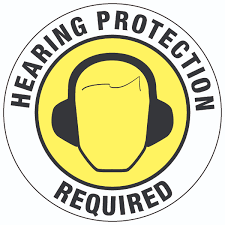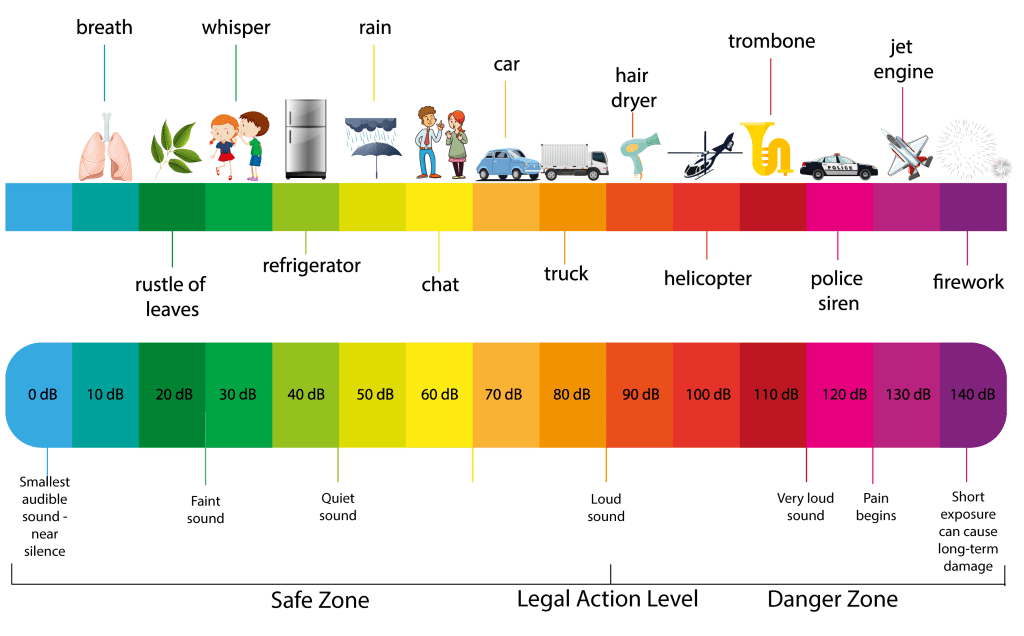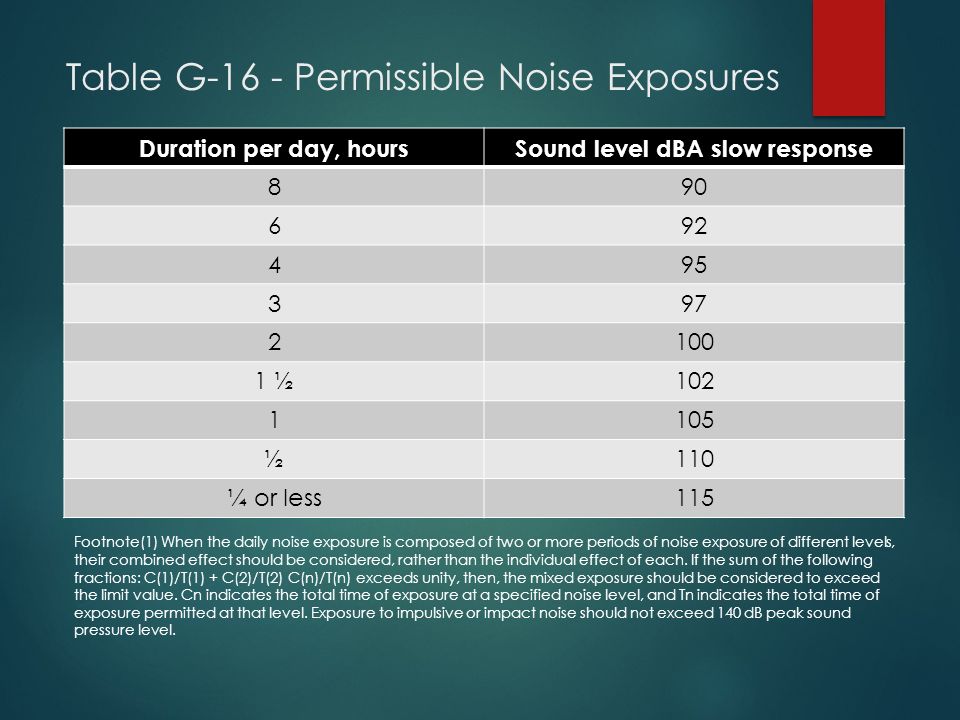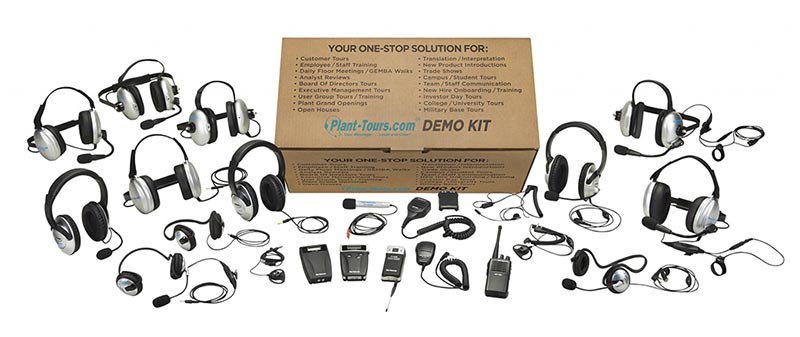You owe it to your employees to provide them with a safe and healthy work environment, and that includes protecting their hearing. Many industrial and manufacturing operations create unhealthy amounts of noise, and your employees are vulnerable to hearing loss if you don’t take the necessary safety precautions. The Occupational Health and Safety Administration (OSHA) created the Hearing Conservation Program (OSHA 1910.95.) as a way to protect workers from noise exposure.
Your business might also have to comply with other noise and workplace safety regulations from organizations such as the National Institute for Occupational Safety and Health (NIOSH) and the Council on Foreign Relations (CFR). In this article, we’ll be reviewing the basics of workplace noise and how to ensure full compliance with the Hearing Conservation program at your company.
OSHA Noise Level Standards
Noise level is measured in decibels (dB), and louder noises have more decibels. Noise levels are also described in decibels A (dBA), and the terms are used interchangeably. OSHA regulations set a permissible exposure limit (PEL) of 90 dBA for all of the workers over the course of an 8-hour workday. OSHA’s noise standard calculates occupational noise exposure using averages because the noise levels will usually vary significantly throughout the day.
OSHA’s noise standard also includes a 5 dBA exchange rate. The amount of noise can fluctuate over the course of a standard workday, and each time that the noise level in the workplace increases by 5 dBA, the length of time a person can be exposed (permissible exposure limit) is halved.
Permissible Exposure Limit (PEL)
Because of the wide variance in noise levels throughout the day, OSHA calculates occupational noise exposure as an average. The current OSHA PEL is set at 80 dBA (A-weighted, slow response) average where noise levels aren’t expected to exceed OSHA’s safety standards and 90 dBA (A-weighted, slow response) average where noise levels are expected to exceed OSHA’s safety standards over an 8-hour time period. We’ll be discussing how Time Weighted Average (TWA) works in more detail in an upcoming section, but there is also a 5 dBA exchange rate over an eight-hour shift. As the workplace gets louder, the time of exposure should decrease by half each time that the noise level increases by 5 dBA.
Noise Exposure Doses
Occupational noise exposure is measured in dosage, and a full dose would be an 8-hour shift with a TWA of 90 dBA. Because TWAs are calculated over an 8-hour shift, you might need to take different noise measurements at different points throughout the day to get an accurate picture of workplace noise levels. If the amount of workplace noise frequently changes throughout the day, you’ll want to take some readings to calculate your dosages accurately. We’ll be discussing some of the administrative controls and engineering controls that you can use to get accurate readings shortly. If the noise exposure levels remain consistent throughout the day, TWAs are pretty easy to calculate. All you have to do is calculate the PEL to calculate the amount of time that your workers are exposed to get an accurate TWA.
Time Weighted Average
The OSHA occupational noise regulations use Time Weighted Average (TWA) or % Dose to measure a worker’s daily noise exposure. If the noise level remains consistent, you only need to take an overall reading and measure TWA in time. For example, a worker would receive a 50% dose over four hours and a 100% dose if they worked a full shift. On the other hand, if certain manufacturing processes exceed the OSHA PEL of 90 dBA, the exposure must be halved each time that the noise level increases by 5 dBA. OSHA’s Table G-16 is included below to illustrate the TWA for different lengths of time and dBA levels.
If the work environment has noise levels that exceed 95 dBA, your workers will receive a full dose in only four hours. At that point, noise reduction efforts are necessary, and your workers will need to finish their shift in a quieter work environment. Manufacturers might only run machinery for a part of a shift in order to remain in compliance. On the other hand, if the workplace doesn’t have noise levels that exceed 80 dBA, your workers won’t receive a full dose. Office workers rarely worry about hearing loss in the workplace and aren’t usually required to wear hearing protectors at work, but this doesn’t mean that they won’t be exposed to dangerous noise levels in a busy office with lots of employees.
Noise exposures are measured with sound equipment, or workers might wear dosimeters to record noise and determine a worker’s noise exposure. If the workplace noise levels aren’t expected to exceed OSHA PEL, then you can use an 80 dBA (A-Weighted) threshold. If the workplaces are expected to exceed OSHA PEL, then you can use a 90 dBA (A-Weighted) threshold. Your dosimeters can measure both thresholds.
G-16 Table for Permissible Noise Exposures
OSHA’s Table G-16 provides a formula for determining if the noise exposure is permissible for workers who are exposed to two or more sound level averages over a period of time.
Determining Your Risk Level
Workplace safety is everyone’s responsibility, and it starts at the top. A noise survey is an important part of your due diligence and the best way to collect accurate and actionable information. You should begin by educating your employees about how noise surveys work and by explaining the scope and purpose of your survey. Your line employees can give you valuable feedback that can help in your decision-making, and they should be stakeholders in your noise survey at all times.
Survey Your Leadership
You should begin by looking for all available data that you can find, including audiogram records, noise sampling data, training documentation, and a workplace schematic diagram. You should talk to your shop foremen and union representatives to make sure that all the workers are using the necessary hearing protection in the workplace. Be sure to keep open lines of communication about your noise and hearing conservation efforts with your employees and union representatives at all times. If a worker has a safety concern, they should be able to alert the foreman for corrective action without fear of reprisal or reprimand.
Conduct a Walkaround Survey
Before you conduct your noise level survey, you should also conduct a preliminary walkaround survey with a foreman or an employee to become familiar with the workspace. Even if you’re performing the survey on an internal basis, you should never assume that you know all there is to know about your facility. You should draw up a sufficiently detailed floor plan and perform spot readings with a sound level meter to estimate noise conditions. You’ll need this information later to set the appropriate noise thresholds for your team members’ dosimeters.
If the spot measurements suggest a TWA of over 80 dBA, you should conduct more thorough testing. If you don’t have a sound level meter available, you can safely assume that the noise level exceeds 85 dBA if you have to raise your voice when speaking to another person standing three feet away.
Interview Employees
Be sure to also talk to the employees on the shop floor. Ask them whether the noise levels for that day are typical and whether or not there are other times when you need to return for different readings. You can also ask them their opinions on the effectiveness of the workplace hearing conservation efforts currently in place and their recommendations for any changes or corrective actions to address their concerns. If you need a solution to the noise and communication you can try using high noise headsets.
OSHA Hearing Conservation Standards










